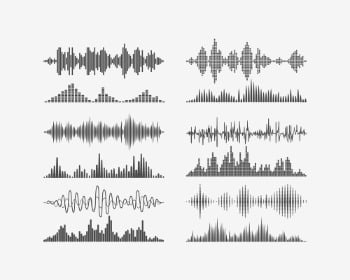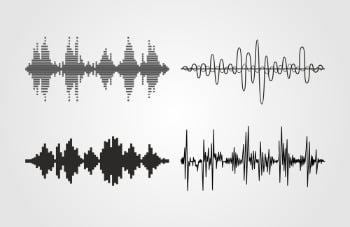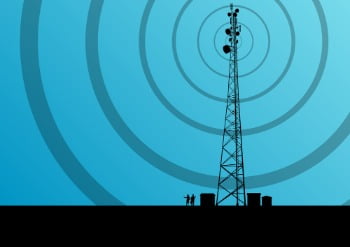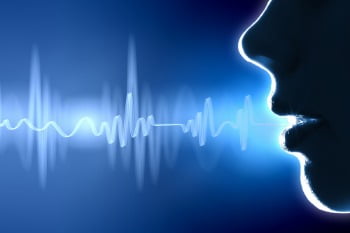We all have heard about radio waves and sound waves, but how does a radio wave differ from a sound wave?
Yes, they both are waves, and they obey the wave equation. They are just dynamic, organized disturbances that carry energy and are caused by certain factors.
But their physical properties, i.e., the way in which they behave, are very much different.
We will talk about their differences later on in this article but first, let’s look at their definition and properties.
What are radio waves?
Radio waves are a type of electromagnetic wave that does not require any medium to propagate.
They have the longest wavelengths in the electromagnetic spectrum. As they have a longer wavelength than visible light, our eyes cannot see them.
The wavelength of radio waves varies from a few centimeters to hundreds of kilometers.
The speed of these waves depends on the medium, but in the vacuum, they travel at the speed of light.
*Note- Wavelength is the distance between two successive crests or troughs of a wave.
How do radio waves work?
Cell phones, radios, televisions, radars, and many more things work with the help of radio waves.
Now, understanding the working principle of radio waves can be a little bit confusing. But, don’t worry, the main concept is easy.
Naturally occurring radio waves are generated by lightning, radiation, or other phenomena.
Artificial radio waves can be made by the accelerated movement of charged particles in their fixed places.
Suppose we take a conducting wire and pass an alternating electric current through it. The current will create positive and negative charges inside the wire.
That charge will result in the formation of an electric field around the wire. As the flow of electricity is alternating instead of direct, successive field lines will form.
These field lines will propagate in the form of a wave.

Properties of radio waves
- Radio waves are a type of electromagnetic radiation having wavelengths longer than the visible spectrum.
- The frequency of radio waves varies from a few centimeters to thousands of kilometers.
- Radio waves cannot be seen or felt directly.
- Like light waves, radio waves also undergo reflection, refraction, and other similar phenomena.
- Radio waves are extremely fast, and they travel at the speed of light in a vacuum.
- The speed of radio waves varies on the medium’s permittivity or permeability.
- Unlike light, radio waves can penetrate through the opaque medium.
Working principle of a simple FM radio
Nowadays, with the spread of the internet, we don’t generally come across many radios.
But, in the 20th century, radios were the most popular ways of entertainment and communication.
You might know that a basic FM radio has different frequency channels. Every radiofrequency denotes a separate channel, and that channel is monitored and controlled by a radio station.
A transmitter vibrates and produces the radio waves and sends them into the atmosphere. But the radio waves don’t carry information by themselves.
Therefore, another sound wave is overlayed on the initial carrier wave. Radio stations use a carrier wave with a constant amplitude but with different frequencies.
The antenna of a simple FM radio catches the signal. The signal gets separated from the carrier wave by your radio’s demodulator.
Finally, the speaker converts the signal into sound waves by vibrating in the same amplitude and frequency, allowing you to listen to your favorite station.
What are sound waves?
Sound is a disturbance that travels as a mechanical wave through the particles of a specific medium.
Particles of any medium vibrate orderly or unorderly in their positions. These vibrations produce a sound that we hear.
Sound waves aren’t very fast, and they travel at a speed of 343m/s in the air.
Depending on the type of vibrations, sound waves can be longitudinal(up to down vibration) or transverse(left to right vibration).
*Note- Sound waves cannot form in the absence of any medium
How do sound waves work?
We hear different kinds of sounds every day, ranging from loud noises to soft whispers.
The working principle of sound is rather simple and easy to understand. Let’s take an example to understand sound.
Suppose you’re playing guitar. For producing music, you need to strum your fingers. Notice that the strings vibrate in an up-down motion.
Now, if we look closely, we can observe the molecules of the strings moving at their mean positions (only an assumption).
The movement of the molecules in the upward direction compresses the surrounding air molecules.
After that, the molecules move downwards, and the air molecules expand. This continuous expansion and contraction form a wave, and thus the sound is produced.

Properties of sound waves
- Sound waves are mechanical waves meaning they can only form if any mechanical work is done.
- Sound waves travel faster in denser mediums. For example, sound waves travel at a speed of 5940m/s in steel, while in the air, it can only travel 343m/s.
- Sound waves cannot travel in a vacuum as there are no particles to vibrate.
- The human ear can only detect sounds having a frequency between 20Hz to 20,000Hz.
- Sound waves with a frequency less than 20Hz are called infrasonic waves, while waves with a frequency of more than 20,000 Hz are called ultrasonic waves.
- Sound waves cannot penetrate through all kinds of mediums.
- Higher frequency means higher sound pitch, while higher amplitude creates louder sound.
How Does A Radio Wave Differ From A Sound Wave: The Difference Between Radio Waves And Sound Waves
Now, we know a little about radio waves and sound waves. So, let’s talk about the main topic of this article, the difference between radio waves and sound waves.
| Characteristics | Radio waves | Sound waves |
|---|---|---|
| 1. Presence of medium | Radio waves are electromagnetic waves, and they don’t require any medium to travel. They can travel long distances in a vacuum. | Sound waves are mechanical waves, so they cannot travel in the absence of a medium. That’s the reason we can’t hear any sound in space. |
| 2. Speed | Radio waves travel at extremely high speeds, and they can travel millions of kilometers in a fraction of a second. | Sound waves are comparatively slow in nature, and they can only travel hundreds of meters(in gases) or thousands of meters (in liquids and solids) in one second. |
| 3. Nature of waves | Radio waves are transverse in nature. So they travel at right angles from the surface of propagation. | Sound waves are longitudinal waves in nature. They travel along the direction of propagation. Transverse sound waves can be seen only in solids and under specific conditions. |
| 4. Presence of electric field | Radio waves are a type of electromagnetic wave, so the presence of an external electric or magnetic field affects the behavior of the waves. | Sound waves are mechanical, so magnetic or electric fields have no direct effect on their behavior. |
| 5. Frequency | The frequency of radio waves generally ranges from 300 GHz to as low as 3 kHz. | Sound waves generally have frequencies ranging from 20 Hz to 20,000 Hz, which we can hear. |
| 6. Effect of temperature | The strength of radio waves is inversely proportional to the surrounding temperature; therefore, sometimes, it gets difficult to perceive radio signals in high-temperature places. | Sound waves are directly proportional to temperature. The higher the temperature, the more vibrations the particles will produce, so more sound waves will generate. |
| 7. Effect of pressure | Atmospheric pressure and humidity affect the transmission of radio waves, interrupting the signal and often causing disruptions. | Atmospheric pressure has no effect on the speed of sound waves. The frequency of the sound may decrease, and you may hear low-pitched audio, but it won’t affect the net speed of the waves. |
| 8. Density | Radio waves travel slower in denser mediums and travel comparatively faster in less dense mediums. | Sound waves travel faster in dense mediums because continuous compression and expansion occur at a faster rate. |
| 9. Effect on humans | Radio waves cannot be seen or heard. But as they are a type of radiation, a large number of electromagnetic waves may disturb the balance of your body. | Sound waves cannot be seen but can be heard. Prolonged high-pitched sounds have many negative impacts on health like improper hearing, sleeping problems, etc., hypertension, and many more. |
| 10. Usage of waves in daily lives | Radio waves are used for communication purposes like broadcasting programs and events on televisions or radios. They are also used for communication by military personnel. | Sound waves are useful for every purpose. Sound waves help us to hear things, and with the help of sound waves, we create different kinds of music. Ultrasonic sounds are also used in submarines and underwater vehicles to detect the path and to avoid obstacles. |
Frequently asked questions on how does a radio wave differ from a sound wave?
Audio frequency is the frequency of sound waves which our ears can hear. Radiofrequency is the frequency of the electromagnetic radio waves which cannot be picked up by us.
Radiofrequency is monitored strictly by Federal Communications Commission. According to them, 30-300 MHz is the limit of exposure for the whole body.
Radio waves are electromagnetic in nature, meaning that they behave like light under general conditions.
They are created by the acceleration of charged particles. Sound waves, on the other hand, are just the continuous compression and expansion of the molecules of the matter.
Even if the medium is super dense, sound waves cannot reach such high speeds as radio waves.
Technically, yes, radio waves cannot stop until they hit something or are absorbed by any kind of object.
The first radio waves which are sent from Earth into outer space have most likely reached a distance of 200 light-years if they aren’t obstructed.
Radio waves have wavelengths more than the range of our visible spectrum. We can only see waves having wavelengths 380-700 nanometers. But radio waves have much longer wavelengths.
Sound waves are formed from the movement of molecules in their positions. Outer space is mostly vacuum.
In a vacuum, there are no such molecules that can vibrate, so sound waves cannot form. That’s why we cannot hear any sound from the sun or from other planets.
The speed of sound depends on the nature of the medium.
If the medium is denser, sound travels faster as it will be easier for the molecules to make more waves in a short time in the denser medium.
But in denser mediums, the amplitude of the sound decreases, so the sound becomes less loud.
Conclusion
The main difference between radio waves and sound waves is that radio waves are electromagnetic and sound waves are mechanical in nature.
Though both of them follow wave equations, their physical properties are completely different from each other, and they also have different purposes in our lives.
We hope that, with the help of our article, you have got the basic idea of the differences between them. Feeling smarter, right?


